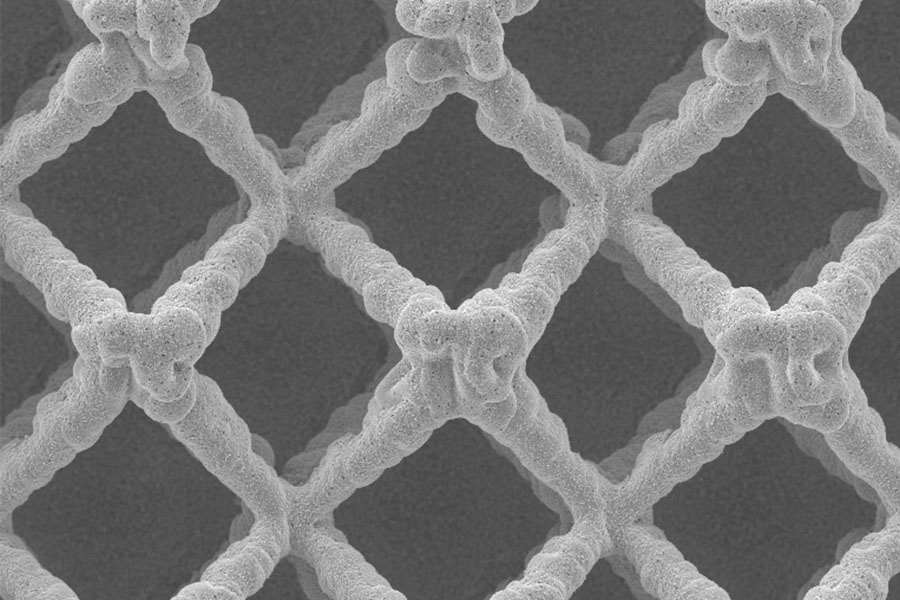
3D Printing the Next Generation of Batteries
By Emily Durham
Media InquiriesAdditive manufacturing, otherwise known as 3D printing, can be used to manufacture porous electrodes for lithium-ion batteries—but because of the nature of the manufacturing process, the design of these 3D-printed electrodes is limited to just a few possible architectures. Until now, the internal geometry that produced the best porous electrodes through additive manufacturing was what’s known as an interdigitated geometry—metal prongs interlocked like the fingers of two clasped hands, with the lithium shuttling between the two sides.
Lithium-ion battery capacity can be vastly improved if, on the microscale, their electrodes have pores and channels. An interdigitated geometry, though it does allow lithium to transport through the battery efficiently during charging and discharging, is not optimal.
Rahul Panat, an associate professor of Mechanical Engineering at Carnegie Mellon University, and a team of researchers from Carnegie Mellon in collaboration with Jonghyun Park, assistant professor of Mechanical and Aerospace Engineering at Missouri S&T have developed a revolutionary new method of 3D printing battery electrodes that creates a 3D microlattice structure with controlled porosity. 3D printing this microlattice structure, the researchers show in a paper published in the journal Additive Manufacturing, vastly improves the capacity and charge-discharge rates for lithium-ion batteries.